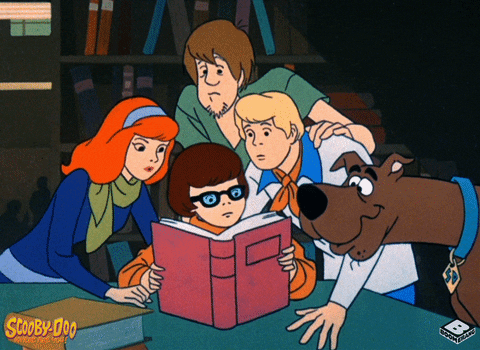Creating a middle-grade novel that captivates young readers requires a thoughtful approach.
Children aged 8-12 are at a dynamic stage, full of curiosity and enthusiasm.
Here are eight tips to help you craft a premise that will resonate with this audience.
1. Understand Your Audience
Middle-grade readers are in a transitional phase, exploring their identities and the world around them.
They seek stories that mirror their experiences while also offering escapism.
To engage them, your premise should balance relatability with adventure.
- Psychological Development: Children in this age group are developing their sense of self and beginning to understand complex emotions and relationships.
- Interests and Preferences: They enjoy stories with strong, relatable characters, exciting adventures, and moral dilemmas.
- Attention Span: Middle-grade readers generally have a longer attention span than younger children, allowing for more complex plots and deeper character development.
2. Develop Relatable Characters
Characters should be believable and relatable. Your protagonist should reflect the readers’ experiences, with flaws and strengths that make them feel real.
Children connect deeply with characters who face challenges similar to their own.
- Character Traits: Create characters with a mix of traits—bravery, curiosity, fear, and doubt. This mix makes them more relatable.
- Growth and Change: Show how characters evolve through the story. Middle-grade readers appreciate seeing characters grow as they do.
- Diverse Representation: Include characters from various backgrounds to reflect the diverse world we live in.
3. Choose Appropriate Themes
Themes like friendship, family, courage, and self-discovery are powerful and relatable for middle-grade readers.
Ensure your themes are age-appropriate yet profound enough to offer meaningful insights.
- Common Themes: Loyalty, overcoming fears, understanding differences, and the importance of honesty.
- Layered Themes: While keeping themes simple on the surface, allow for deeper layers that can be uncovered with thought and discussion.
- Positive Messages: Even when dealing with difficult topics, aim to leave readers with a sense of hope and understanding.
4. Craft an Engaging Plot
A gripping plot keeps readers hooked. Start with a strong hook to capture interest immediately.
Maintain a balance of tension and excitement through well-paced events and surprising twists that keep the story dynamic.
- Starting Strong: Begin with an event that pulls the reader in right away. This could be a mystery, an unusual event, or a character dilemma.
- Pacing: Ensure the plot moves at a steady pace, with a mix of action, dialogue, and quieter moments for reflection.
- Twists and Turns: Keep readers on their toes with unexpected plot developments. However, ensure these twists are believable and well-foreshadowed.
5. Balance Fantasy with Reality
Middle-grade readers enjoy a blend of fantasy and realism. Integrating fantastical elements into a realistic setting can make your story more engaging.
Ensure the fantasy elements enhance rather than overshadow the realistic aspects of the story.
- World-Building: Create a vivid, believable world where fantasy elements feel natural.
- Rules of Magic: If using magic, establish clear rules to maintain consistency.
- Real-Life Parallels: Use fantasy to explore real-life issues in a more approachable way.
6. Use Clear and Vivid Language
Language should be accessible yet descriptive. Avoid overly complex vocabulary that might alienate young readers.
Instead, use vivid descriptions that bring scenes to life and evoke emotions.
- Descriptive Writing: Paint clear pictures with your words, engaging all the senses.
- Dialogue: Keep dialogue natural and age-appropriate. It should reflect how children in this age group speak and think.
- Action Words: Use active verbs to keep the narrative dynamic and engaging.
7. Evoke a Sense of Wonder
Incorporate elements that spark imagination and wonder.
Mysterious lands, magical creatures, and unexpected adventures can captivate young minds.
A sense of wonder keeps readers engaged and eager to see what happens next.
- Imaginative Settings: Create settings that are rich in detail and filled with possibilities.
- Mystery and Discovery: Include elements of mystery that characters need to solve or explore.
- Unexpected Adventures: Characters should encounter the unexpected, prompting curiosity and excitement.
8. Show Character Growth
Your protagonist should undergo significant growth.
Middle-grade readers, who are experiencing their own personal growth, appreciate stories where characters evolve and learn important lessons.
A satisfying conclusion with a clear sense of development can leave a lasting impression.
- Internal and External Conflicts: Characters should face both personal and external challenges.
- Learning and Changing: Show how characters learn from their experiences and become stronger or wiser.
- Emotional Depth: Don’t shy away from exploring emotions deeply. It’s what makes the characters real and relatable.
Writing a middle-grade novel requires a delicate balance of relatability, adventure, and imagination.
By understanding your audience and creating relatable characters, you lay the foundation for a story that resonates. Choosing age-appropriate themes and crafting an engaging plot keeps readers hooked.
Balancing fantasy with reality, using clear and vivid language, and evoking a sense of wonder enriches the reading experience.
Most importantly, showing character growth mirrors the journey of your readers, making your novel not only a source of entertainment but also a meaningful part of their growth.
Embrace these tips, and you’ll be well on your way to crafting a compelling middle-grade novel that young readers will cherish.
Need Help With Your Book Cover or Literary Packaging?
Looking to bring your ideas to life with captivating storytelling and imaginative flair?
Whether you need compelling copywriting, engaging written, visual or video content creation, or literary packaging that stands out, I’m here to help.
Let’s collaborate to turn your vision into reality. Reach out today to discuss your project and let’s embark on a journey of creativity together!










